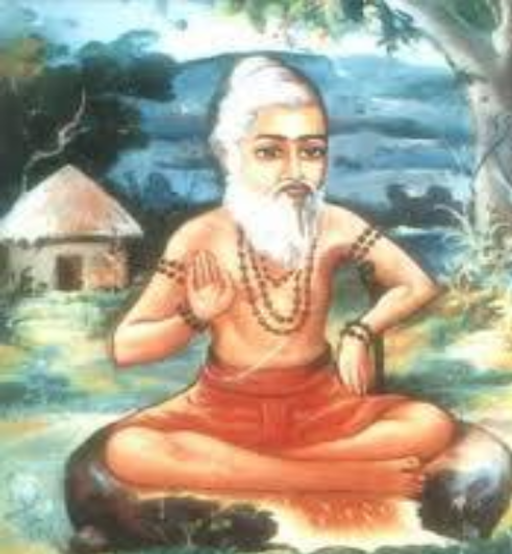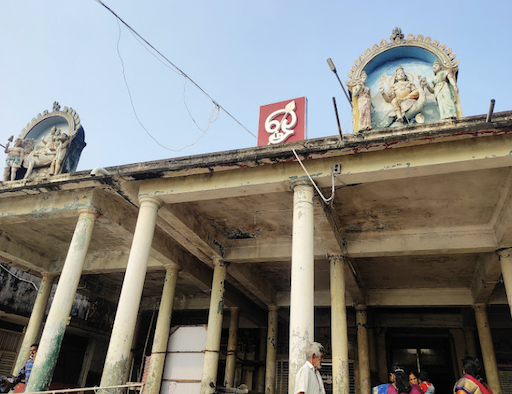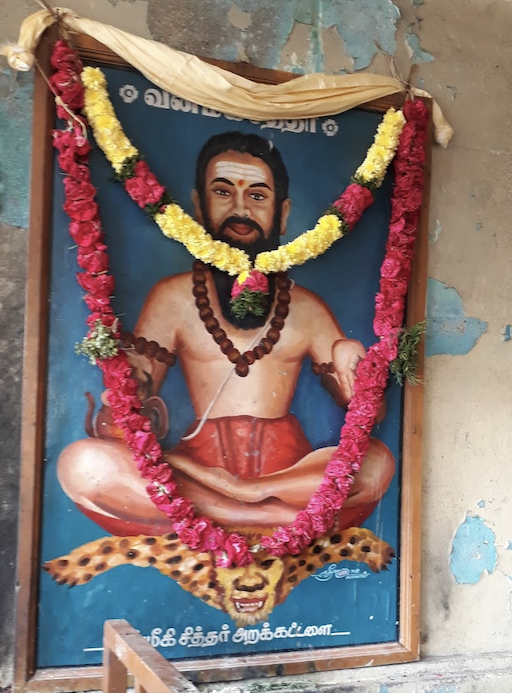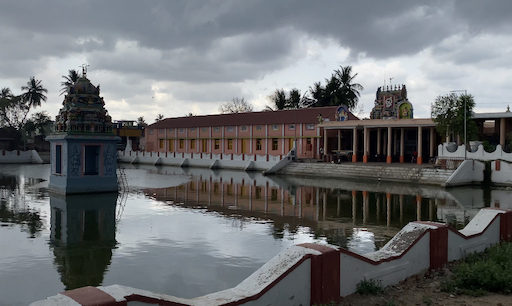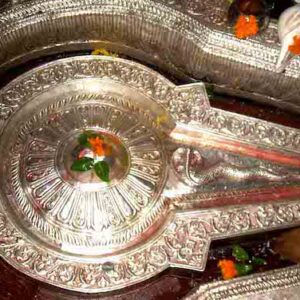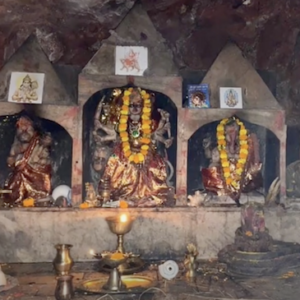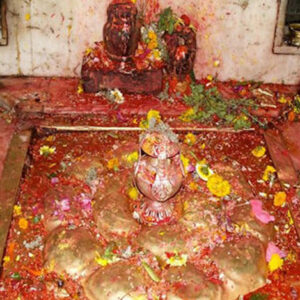This is a Jeevasamadhi of Vanmeegar or Valmiki Siddhar.
There is a Vanmeegar art in the entrance of the temple. You can go into meditative states here effortlessly.
How to get there
The temple is located 31.4 kms South West of Nagapattinam.
Map: https://goo.gl/maps/mcZtFP8NZ4MdcRdG7
About Vanmeegar or Valmiki Siddhar
Valmiki (/vɑːlˈmiːki/;[1] Sanskrit: वाल्मीकि, Vālmīki [ʋɑːlmiːki])[A] is celebrated as the harbinger–poet in Sanskrit literature.[2] The epic Ramayana is attributed to him, based on the attribution in the text itself.[4] He is revered as Ādi Kavi, the first poet, author of Ramayana, the first epic poem.
The Ramayana, originally written by Valmiki, consists of 24,000 shlokas and seven cantos (kaṇḍas).[5] The Ramayana is composed of about 480,002 words, being a quarter of the length of the full text of the Mahabharata or about four times the length of the Iliad. The Ramayana tells the story of a prince, Rama of the city of Ayodhya in the Kingdom of Kosala, whose wife Sita is abducted by Ravana, the demon-king (Rakshasa) of Lanka. The scholars’ estimates for the earliest stage of the text ranging from the 8th to 4th centuries BCE,[6][7] and later stages extending up to the 3rd century CE,[8] although original date of composition is unknown. As with many traditional epics, it has gone through a process of interpolations and redactions, making it impossible to date accurately.
British satirist Aubrey Menen says that Valmiki was “recognized as a literary genius,” and thus was considered, “an outlaw,” presumably because of his “philosophic scepticism,”[9] as part of an “Indian Enlightenment” period.[10] Valmiki is also quoted as being the contemporary of Rama. Menen claims Valmiki is “the first author in all history to bring himself into his own composition.”[11]
Valmiki was born as Agni Sharma to a Brahmin named Pracheta (also known as Sumali) of Bhrigu gotra,[12][13] According to legend he once met the great sage Narada and had a discourse with him on his duties. Moved by Narada’s words, Agni Sharma began to perform penance and chanted the word “Mara” which meant “die”. As he performed his penance for several years, the word became “Rama”, a name of the god Vishnu. Huge anthills formed around Agni Sharma and this earned him the name of Valmiki. Agni Sharma, rechristened as Valmiki, learnt the scriptures from Narada and became the foremost of ascetics, revered by everyone.
There also exist some legends about Valmiki having been a thief before turning into a rishi. The Nagara Khanda of the Skanda Purana in its section on the creation of Mukhara Tirtha mentions that Valmiki was born a Brahmin, with the name of Lohajangha and was a devoted son to his parents. He had a beautiful wife and both of them were faithful to each other. Once, when there was no rain in the region of Anarta, for twelve long years, Lohajangha, for the sake of his hungry family, started robbing people that he found in the forest. In the course of this life he met the seven sages or the Saptarishi and tried to rob them as well. But the learned sages felt pity on him and showed him the folly of his ways. One of them, Pulaha gave him a Mantra to meditate upon and the Brahmin turned thief got so engrossed in its recitation that ant-hills came up around his body. When the sages returned and heard the sound of the mantra coming from the ant-hill, they blessed him and said, “Since you achieved great Siddhi seated within a Valmīka (an anthill), you will become well-known in the world as Vālmīki.”[14][15]
Vanmeegar and Valmiki same
Sri Vaanmeegar’s birth star is Anusham in the Tamil month of Purattasi (September-October). TSiddhar Bogar in his script “Bogar 7000” proclaims that they are one and the same. He says that Vaanmeegar is the name of the siddhar who wrote Valmiki Ramayana in song (verse) number 5834. He makes a clear distinction between the names Vaanmeegar and Valmiki. Further, in his next song (verse number 5835), Bogar says that Vaanmeegar’s age is 700 and some odd days. He also says that he is a learned scholar in Tamil language. He also makes a reference about his samadhi. This author is not able to understand the exact meaning of the second part of that song. It is also said that Sri Vaanmeegar alias Valmiki wrote the epic Ramaya on getting the spiritual knowledge from Narada. Sri Vaanmeegar’s samadhi is located at Ettukudi in Tamil Nadu.
Source:
https://en.wikipedia.org/wiki/Valmiki
https://yogascience.angelfire.com/others.htm
